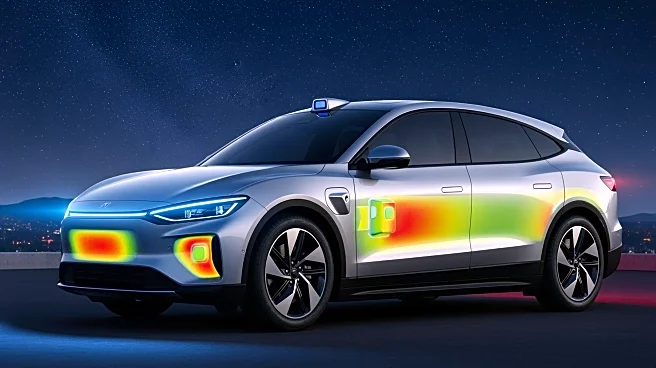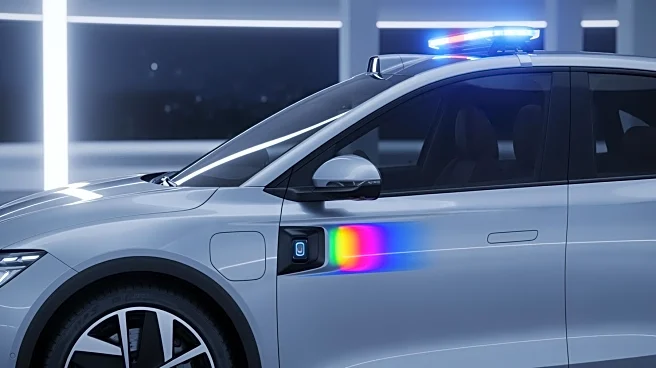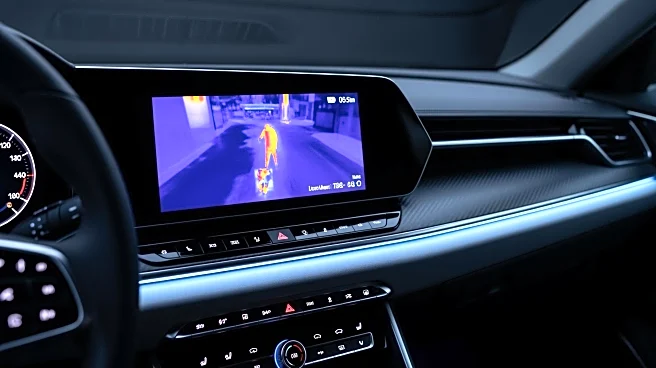What's Happening?
Geely has integrated a Raytron automotive thermal imaging camera into the LEVC L380 electric multi-purpose vehicle to improve nighttime driving safety. This system is part of an infrared night vision setup
designed to reduce collisions during night driving. The LEVC L380 is equipped with 28 perception sensors, with the infrared night vision system serving as a key safety feature. Raytron's thermal imaging system offers a detection range of up to 300 meters, surpassing conventional headlights, and provides horizontal coverage of approximately 10.5 meters, covering at least three traffic lanes. This technology achieves over 95% pedestrian detection and over 98% vehicle recognition accuracy, enhancing safety by identifying potential hazards early. The system is effective in conditions where traditional optical cameras may fail, such as darkness, fog, and glare.
Why It's Important?
The implementation of thermal imaging technology in vehicles like the LEVC L380 is significant as it addresses the higher traffic fatality rates at night, which are three times greater than during the day, according to the US National Highway Traffic Safety Administration. By providing drivers with advanced detection capabilities, this technology offers a crucial window of extra reaction time, potentially reducing accidents and saving lives. The adoption of such advanced safety features could influence the automotive industry to prioritize similar technologies, thereby enhancing overall road safety. As thermal imaging becomes more mainstream, it may lead to broader applications in various vehicle models, improving safety standards across the industry.
What's Next?
The deployment of Raytron's thermal imaging technology in the LEVC L380 could pave the way for its integration into more vehicle models, including those from other manufacturers. As the technology proves effective, it may encourage other automakers to adopt similar systems, potentially leading to industry-wide improvements in nighttime driving safety. Additionally, regulatory bodies might consider updating safety standards to include advanced imaging technologies, further promoting their use. The success of this initiative could also stimulate further research and development in automotive safety technologies, driving innovation in the sector.
Beyond the Headlines
The integration of thermal imaging technology in vehicles highlights the growing importance of advanced safety features in the automotive industry. This development may also raise ethical considerations regarding the balance between technology reliance and driver responsibility. As vehicles become more equipped with autonomous and semi-autonomous features, discussions around the ethical implications of technology-driven safety measures are likely to intensify. Furthermore, the widespread adoption of such technologies could lead to shifts in consumer expectations, with safety becoming a primary factor in vehicle purchasing decisions.













